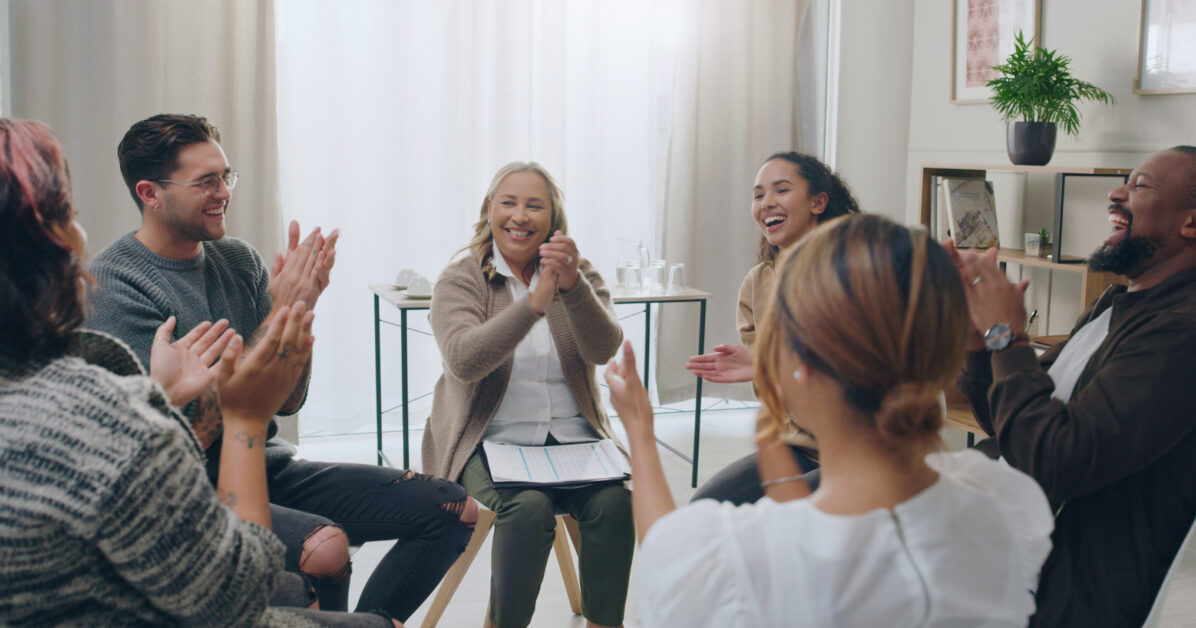
In Recognition of National Mental Health Awareness Month

May is a plethora of recognition campaigns: Mental Health Awareness Month; Asian American, Native Hawaiian, and Pacific Islander Heritage Month; Children’s Mental Health Awareness Day (May 9); and National Prevention Week (May 12-18).
Our focus in this article is on Mental Health Awareness Month: its history, the stigma of mental health in marginalized communities, what Marin City Health and Wellness Center is doing to break taboos, and what individuals can do to help themselves and others—not just in May, but at any time throughout the year.
Clifford Beers and the history behind mental health awareness month
Clifford W. Beers, a sufferer of depression and anxiety, became the father of what was initially known as the mental hygiene movement. His own harrowing experiences in public and private institutions led to his autobiography in 1908, and the birth of mental health reform in the United States. Mental Health America (MHA) grew out of that movement and, in 1949, they launched Mental Health Awareness Week, which later evolved into a month-long campaign.
MHA, a community-based nonprofit with an advocacy network and career center, has made it its mission to improve mental health in America, to spread awareness about mental illness and wellness, to encourage people to seek help as needed, and to celebrate those in recovery or who have recovered. Like Marin City Health and Wellness Center, MHA supports whole person care and mental health equity.
Racial barriers and the stigma around mental health among African Americans
According to the National Institute of Mental Health, nearly one in five U.S. adults live with a mental illness. In 2020, 52% of white people in need received mental health services compared to 37.1% of African Americans.
Access to mental health services can be challenging for underserved communities, be it a lack of or limited insurance, limited and/or affordable resources, not to mention, for some, there are transportation hurdles. However, even when access, cost, and transportation are not the issues, the prevailing attitudes in Black culture around mental health—and mistrust in the medical and mental health establishment—are the biggest barriers.
Generations of racism, discrimination, and trauma began with the dehumanization of African Americans as chattel slaves. Because Black people were thought of as non-human, it was believed they didn’t suffer from mental illness. This belief can become internalized from one generation to the next. Even in today’s world, economic violence, police brutality, and common microaggressions are big psychological stressors and lead to higher rates of PTSD among Black people compared to their white counterparts.
Likewise, as religion and community were coping mechanisms to the brutalities, cruelties, and indignities of enslavement, the idea that one could “pray away” his troubles became part of the culture that exists today.
After slavery, the Reconstruction era followed by segregation laws extended injustices of African Americans and deepened their mistrust of systems in the U.S. As a result, the stigma that anyone in need of mental health services was “crazy,” or that it was a sign of weakness, prevailed.
Today, with nearly half of Black Millennials and Gen-Zers rarely or never attending church, religious coping is less of a go-to. However, even among young African Americans, the belief that depression is a sign of weakness and resistance to being psychologically open are still strong. Pop culture is helping change perception, with shows like HBO’s Insecure, having storylines around self-help, depression, and bipolar disorder, yet there is still much to do for those taboos about mental health to be torn down.
Among the Spanish-speaking, fear of being labeled ‘loco’
According to a 2022 report by the U.S. Census Bureau, 13.9% (46.2 million) of the country’s population is foreign born, with 23% of those residents born in Mexico (followed India [6%], China [5%], the Philippines [5%], El Salvador [3%], and Vietnam [3%]).
While essentially 37% of Black people with mental illness sought treatment in 2020, the percentage is even lower, at 35%. among Hispanics. Like the African American community, this low number is both a cultural barrier as well as an issue of access.
When it comes to refugees and immigrants coming to the U.S. from either War-torn countries or where there is a great deal of political violence and conflict–coupled with the trauma of the migration journey itself and the stressors of resettlement and integrating into American life–immigrants have PTSD and other mental health issues that are unique.
Barriers to mental health abound among the displaced. According to the U.S. Committee for Refugees and Immigrants, “These barriers include limited availability of service providers, cultural and language barriers, lack of language support, cost of care, lack of health insurance or covered services, lack of access to transportation, encounters with discrimination, mistrust of service systems, and mental health stigma.” Except for matters surrounding same-language support, the barriers for immigrants mirror those for many African Americans.
Like African Americans, many immigrants come from cultures that see obtaining mental health services as a sign of weakness, or something reserved for “crazy people.” This makes it harder for their kids to get the treatment they need and the cycle perpetuates from one generation to the next.
A few additional statistics:
- Nearly 22% of Hispanic and Latino Americans reported having a mental illness, compared to 23.9% of non-Hispanic whites. However, 36% of Hispanic and Latino Americans received mental health services compared to 52% of non-Hispanic whites. (2021 National Survey on Drug Use and Health)
- Suicide is the third leading cause of death among Hispanic and Latino Americans ages 10-24 and men 25-34 (The Substance Abuse and Mental Health Services Administration, aka SAMHSA).
Efforts to broaden access to mental health at the federal level
The White House issued its 2024 Proclamation on National Health Awareness Month, outlining the steps the administration is taking to increase access to and narrow the disparity gap of mental health in America, which includes having mental health care on the same level as medical care.
In addition:
- SAMHSA held a one-day symposium on improving mental health outcomes for children, youth, young adults, and their families in schools and communities.
- SAMHSA and the Office on Women’s Health (OWH) are leading the Task Force on Maternal Mental Health that will ultimately improve access to and activities around maternal mental health and the dual-diagnosis of addiction and substance abuse.
At MCHWC, we’re providing holistic support when it comes to mental health
Our behavioral health department provides a full range of mental health services, from individual to couples counseling, family therapy, child play-therapy, process, support and skill building, groups for parents, youth and community circles, as well as medication management and psychiatric services.
As Dr. Julie Morris, Director of Behavioral Health at MCHWC, says, “Both the mind and body are interconnected and offering therapy allows us to provide holistic support that facilitates overall wellness.”
We provide therapeutic support with various issues, including depression/mood disorders, anxiety, trauma, behavioral goals (e.g., smoking cessation, weight loss), coping with medical problems, grief, substance use, developmental disorders (e.g., autism, ADHD, learning disorders), and social/interpersonal issues.
“You don’t wait until your check engine light is on or your car breaks down to do an oil change,” says Dr. Morris. “Similarly, your mind and body need regular maintenance to keep you running and coping with all the stressors life throws at you.”
MCHWC provides a space to learn coping skills, express feelings, and process difficult experiences. “By addressing everyday concerns before reaching your limit, we help keep your engine running and stay connected with the things that are important to you,” says Dr. Morris.
A MCHWC Behavioral Health Case Study
Kayla Jones, Marin City Health and Wellness Center’s Director of Casework Management, is currently working on a case with a Marin woman who is severely agoraphobic.
Agoraphobia is an anxiety disorder where people fear going outside or leaving their room or home and where doing so results in panic and a sense of entrapment and/or embarrassment.
Jones’s patient has not been to see a doctor or a dentist for over 3 years, and was not willing to come into any of the clinics (initially, she was barely willing to speak over the phone with the caseworkers). So, the MCHWC caseworker team did Zoom calls with her, as well as an at-home physical check-up and minor dental work.
The patient still refuses to visit any of the clinics, but has at least gotten medical and dental care, and has a team she can reach out to. It may be years before she can and will leave her home, but receiving long-overdue care is still progress.
Tips on what can do to help spread mental health awareness
As we wrap up National Mental Health Awareness Month here are a few suggestions on how we can keep the spotlight on these important matters year-round:
Check in with friends and family
People who are struggling with mental health, from mild depression to suicidal ideation, don’t always show it.
The National Alliance on Mental Illness provides a Friends & Family Seminars to learn hope to best support a loved one with a mental health condition. If you know of a friend or family member being treated at one of our clinics and you’re looking for ways to be supportive, call MCHWC at (415) 339-8813.
Donate to those in need
Donate to a local clinic that offers mental health services to underserved communities.
Follow and share on social media
You can follow Mental Health America on X (formerly Twitter) or Facebook as well as share this blog post and what MCHWC offers the community.


